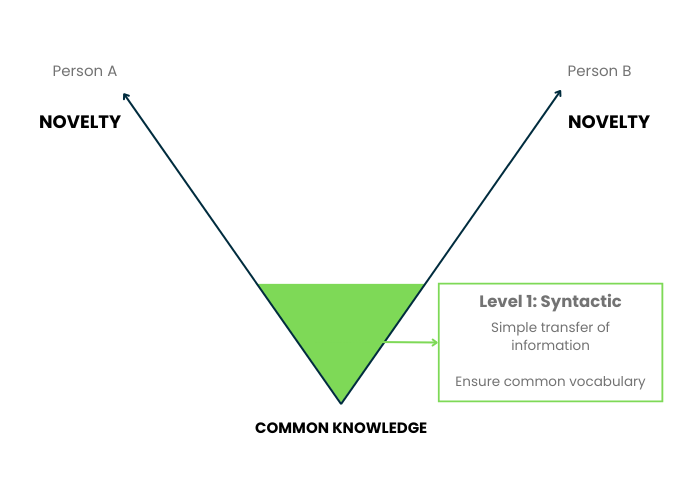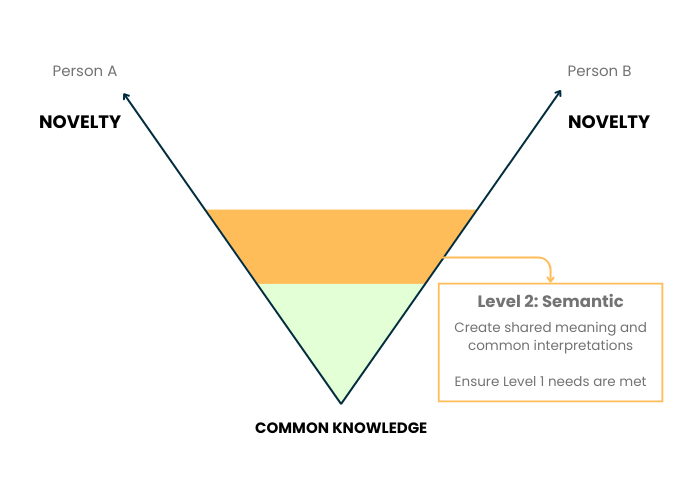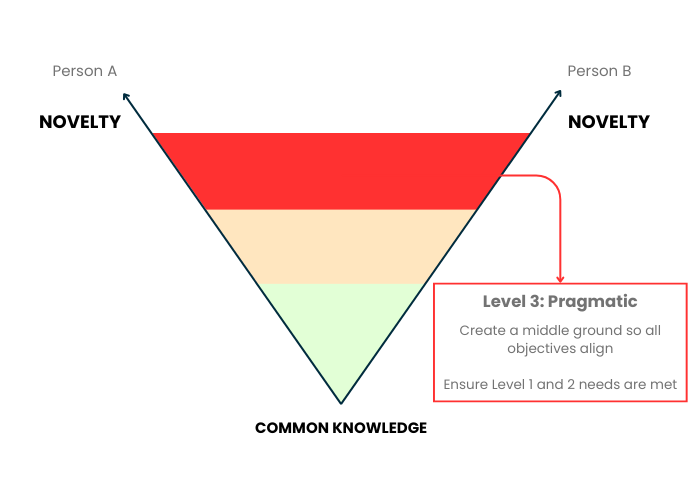Strategies for Meaningful Conversations
Apply Proven Frameworks to Overcome Communication Barriers and Drive Results
I remember the time I poured hours into preparing a presentation, confident that my ideas were solid and that my message would resonate. But as I stood in front of the room, I noticed the blank stares and subtle shifts in attention.
For Spanish readers: ¡Este artículo también está disponible en español!
It was clear. I wasn’t connecting. My words weren’t landing as intended, and I felt like I spoke a different language.
Communication is one of the most essential skills in today’s job market. Whether presenting to a team, pitching an idea, or just trying to get a point across, it’s not just about what you say. It’s about making sure your message truly connects.
Yet, effective communication, especially within diverse teams, is incredibly challenging. Each of us brings unique experiences and knowledge, which can sometimes create gaps between you and your audience.
I’ve seen this firsthand in the companies I’ve worked with, where the differences in knowledge make it feel like we are from different planets.
But here’s the thing: it doesn’t have to be this way. Based on research by Carlile (2004), I've found a framework that I use to navigate these communication challenges. This framework helps ensure that my ideas don’t just reach others but genuinely resonate.
Before I share this framework with you, let’s examine why sharing knowledge can be so tricky.
Why Sharing Knowledge Can Be So Challenging
Knowledge is a complex and valuable resource in any company. Success depends on different teams working together toward a common goal when building new products or services.
But here’s the tricky part: communicating and sharing knowledge isn’t always straightforward.
Three fundamental properties of knowledge can help us understand why communicating effectively can sometimes feel challenging and sometimes even frustrating.
Difference - Knowledge Gaps
Think about the varying levels of knowledge between people or teams.
For example, someone just starting their career will have a different knowledge base than a seasoned expert. Or consider the specialized expertise different teams hold, like how your sales team deeply understands customer needs while your technology team knows the ins and outs of your platform.
These differences can create communication gaps that make it hard to get on the same page.
Dependence on Shared Knowledge
Now, consider how your knowledge is connected to others in your company.
Even though different teams have their expertise, achieving your goals depends on collaborating effectively.
Imagine you’re on a marketing team launching a new software product. To succeed, you need to leverage the technical know-how of your engineering team. They might not be marketing pros, but their insights are crucial for crafting an effective campaign.
This interdependence is what makes teamwork both powerful and challenging.
Novelty - The Challenge of New Information
This one’s a bit more nuanced. Novelty refers to how new the information you share is to your audience.
Sharing new information is one of the most challenging parts of communication because it requires your audience to step out of their comfort zone. If your presentation challenges their belief or knowledge, they might resist your message. This is often called the “curse of knowledge.”
The newer and more unfamiliar your information is, the more effort you’ll need to put into ensuring it’s understood.
How These Factors Impact Communication
From my experience, I’ve found that sharing information isn’t just about talking. It’s about navigating through layers of complexity.
Researchers have broken these layers into three levels: syntactic, semantic, and pragmatic. Think of these as different stages you must work through to ensure your message is fully understood.
Let’s take a closer look at each one.
Level 1: Speaking the Same Language (Syntactic Level)
At this first stage, think of communication as a basic information exchange. I like to call it the "Information Processing" stage.
Here, the focus is on ensuring everyone is on the same page. This is straightforward communication, where what you say shouldn’t surprise your audience.
Imagine you’re explaining a routine process to your team. There’s little room for confusion because everyone already understands the basic terms and concepts.
The key is ensuring that your language is clear, consistent, and aligned with your audience's knowledge. It’s like agreeing on the rules before starting a game. Everyone needs to know what to expect.
But even at this level, misunderstandings can creep in if the vocabulary isn’t shared. So, your main goal is establishing a common language with which everyone is comfortable.
This might seem simple, but the foundation supports more complex communication later on. Everyone speaking the same language makes moving to the next level much smoother.

Level 2: Finding Common Ground (Semantic Level)
As we move to the second layer, communication becomes more complex. This is where you introduce new ideas or information, what I call the "Finding Common Ground" stage.
When the information you’re sharing is new to your audience, it can create an imbalance. People interpret new information based on their previous experiences.
Imagine you’re discussing a new concept with a colleague, and they respond with confusion or a completely different interpretation. This happens because their mind tries to fit your new idea into what they already know.
The challenge at this level is making sure that what you say and what they hear are aligned.
To navigate this, the first step is building a shared vocabulary everyone understands (tackling the challenge of Level 1). Then, you need to work together to create a shared understanding of how this new information should be interpreted.
It’s about bridging the gap between what you know and what they know so that you all have the same foundation.

Level 3: Navigating Complex Conversations (Pragmatic or Political Level)
If you thought the previous level was challenging, buckle up because this third layer of communication complexity takes it to a new level.
When you reach what researchers call the Pragmatic or Political Level, you deal with situations where the information you share is new and potentially conflicting with your audience's goals or beliefs.
Don’t let the term "political" mislead you. This isn’t just about world leaders or high-stakes negotiations.
We encounter this level of communication more often than we realize, even in seemingly minor disagreements, like choosing the color of a button for a project.
Trust me, deciding between navy blue and blue can ignite a surprisingly intense debate about icons!
At this stage, your challenge is influencing and potentially reshaping your audience’s thinking before they process your message.
This is where flexibility and savvy come into play. You need to find common ground, a shared interest or goal that both you and your audience can agree on while gently challenging their existing perspectives.
It’s important to recognize that this isn’t just about changing their minds. It’s a two-way street where you must remain open and flexible.
Your understanding and mental model might also shift as you work toward that middle ground. This dynamic process, where both sides evolve and blend their knowledge, is called creative abrasion. When managed well, it can lead to genuinely innovative outcomes, producing results neither side could have achieved alone.
However, communicating at this level can be exhausting. It requires patience, empathy, and a deep understanding of your position and audience. But when done correctly, the results can be transformative, turning potential conflicts into opportunities for growth and innovation.

Practical Strategies for Applying This Communication Model in Your Daily Life
Effective communication isn’t just for the office or during high-stakes negotiations. It’s a skill that can transform your interactions in every area of life.
Whether you're leading a team, discussing ideas with colleagues, managing relationships at home, or even deciding where to eat. Understanding and applying the levels of complexity of communication can make all the difference.
Here are some tips on how you can use this model to improve your communication, no matter the situation:
1. Preparing to Communicate: Setting the Stage for Success
Know Your Audience:
Before interacting, take a moment to understand who you’re speaking to. Are they familiar with the topic? What’s their background or perspective?
Tailoring your message to your audience’s needs helps ensure it resonates.
Assess the Novelty:
If you’re introducing new or complex information, anticipate how it might be received.
Break down ideas into simpler components, relate them to familiar concepts, and create a safe space for exploration and discussion.
Simplify, Simplify, Simplify:
Use analogies, stories, or everyday language to make your message clear and relatable.
Simplifying complex ideas helps everyone understand and remember your points.
Identify Shared Interests:
When goals or perspectives differ, finding common ground is crucial. This could mean aligning on shared values in a community discussion or agreeing on a mutual goal during a team meeting.
Establishing common interests builds the way for more productive and harmonious conversations.
2. During the Conversation: Navigating the Communication Process
Start with Clear Objectives:
Begin with a clear purpose.
This keeps everyone focused and ensures that the conversation stays on track, helping to avoid misunderstandings and distractions.
Listen Actively:
Pay attention to verbal and non-verbal feedback. It will help you adjust your communication style to fit the complexity of the interaction.
Active listening allows you to respond appropriately and effectively.
Stay Flexible:
Be ready to adapt if the conversation takes an unexpected turn.
Flexibility is key when navigating different viewpoints. The goal is to remain open to new ideas while guiding the conversation toward a constructive outcome.
Embrace Discomfort:
Sometimes, the most valuable conversations are the ones that feel uncomfortable.
These moments often lead to breakthroughs, new ideas, and stronger relationships. Embrace the uncertainty as a sign of pushing boundaries and making progress.
3. After the Interaction: Reflecting and Growing
Reflect on the Outcome:
After every significant interaction, reflect on what went well and what could be improved. This habit of self-assessment is invaluable, helping you continuously refine your communication skills.
Seek Feedback:
Don’t hesitate to ask your audience how they felt about the conversation. Constructive feedback is one of the best tools for personal growth.
Iterate and Learn:
Communication is an ongoing process. Each interaction is an opportunity to learn and improve. By continuously applying and refining these strategies, you’ll find that your communication becomes more effective and impactful over time.
Let’s Continue the Conversation
Effective communication is more than just a skill. It’s a transformative tool that can enhance every area of your life. Independently of where you are, understanding the layers of communication can help you connect more deeply, collaborate more effectively, and innovate more powerfully.
But this is just the beginning. I want to hear from you. How do you navigate communication challenges in your own life? What strategies have you found effective?
Share your thoughts and experiences in the comments below. Let’s learn from each other and grow together.
If you found this article helpful, I would like you to subscribe to my Substack. By subscribing, you’ll receive my latest posts directly in your inbox, and we can continue exploring strategies for better communication, leadership, and personal growth.



